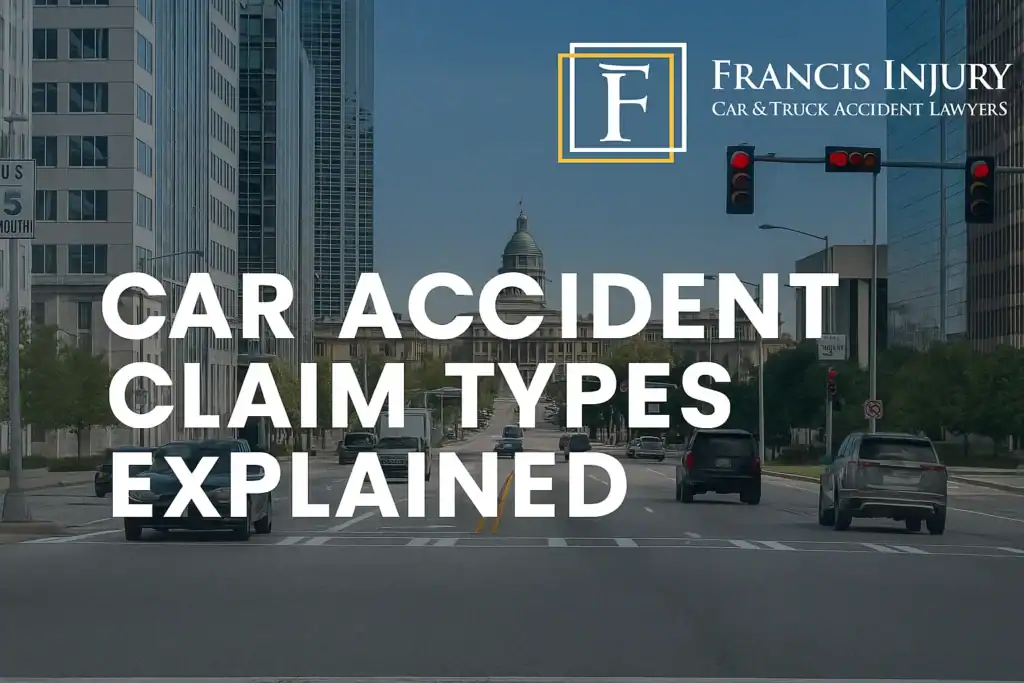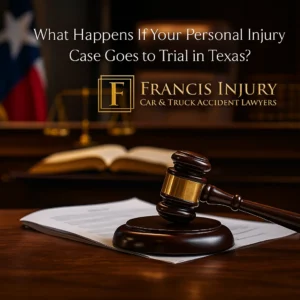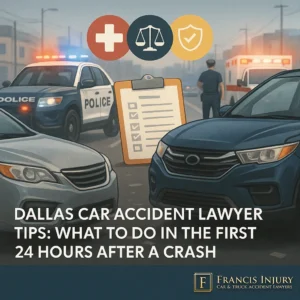
Car accidents can result in a wide range of injuries, damages, and legal consequences. Understanding the different types of car accident claims can help you protect your rights, maximize compensation, and hold the responsible party accountable. This comprehensive guide breaks down the most common types of accident claims, their legal implications, and how a skilled attorney can help.
1. Rear-End Collisions
One of the most common types of accidents, rear-end collisions occur when a vehicle crashes into the back of another. These cases often involve distracted driving or tailgating and may result in whiplash, back injuries, or worse. In most states, the rear driver is presumed to be at fault, but insurance companies may still try to reduce or deny your claim.
Learn more about rear-end collisions and your legal rights.
2. Head-On Collisions
Head-on collisions are some of the most dangerous accidents due to the force of impact. These typically occur on rural roads or during improper passing. Injuries are often catastrophic and include traumatic brain injuries (TBIs), spinal cord injuries, and wrongful death claims.
3. T-Bone or Side-Impact Collisions
T-bone accidents often happen at intersections when one driver runs a red light or fails to yield. The impact usually strikes the side of the vehicle, making passengers especially vulnerable. Liability often depends on traffic camera footage, eyewitnesses, or police reports.
4. Multi-Vehicle (Pile-Up) Accidents
Accidents involving multiple vehicles often lead to complex claims involving several at-fault parties and insurance carriers. Establishing liability requires a detailed investigation and may include expert accident reconstruction testimony.
5. Hit-and-Run Accidents
If the at-fault driver flees the scene, you may still recover damages through your uninsured motorist (UM) coverage. Prompt police reporting and witness identification are crucial in these claims.
6. Drunk or Drugged Driving (DUI) Accidents
Victims of DUI accidents may pursue both compensatory and punitive damages. Criminal charges against the driver may support your civil claim, but a personal injury lawsuit is your primary means of securing compensation for medical bills, lost income, and suffering.
7. Distracted Driving Accidents
Texting, phone use, eating, or even adjusting GPS can cause distractions leading to serious crashes. These cases often involve cell phone records and witness testimony to prove negligence.
8. Rollover Accidents
Often involving SUVs and trucks, rollovers can be caused by high-speed turns, tire blowouts, or collisions. Injuries in these accidents can be life-threatening. Product liability claims may arise if vehicle defects contribute to the crash.
9. Uninsured / Underinsured Motorist Claims
If the other driver has little or no insurance, your own policy’s UM/UIM coverage can protect you. These claims require careful documentation and strong negotiation tactics with your own insurance company.
10. Commercial Vehicle or Rideshare Accidents
Accidents involving Uber, Lyft, Amazon, FedEx, or commercial trucks may involve multiple layers of liability. Corporate policies, driver contracts, and insurance tiers affect how claims are handled.
What to Do After a Car Accident
- Seek immediate medical attention
- Report the accident to police
- Document the scene (photos, witness contact)
- Don’t admit fault to anyone
- Contact a car accident lawyer before speaking to insurance companies
Injured in a Car Accident? Let Us Help You Claim Maximum Compensation
Whether you’ve been rear-ended, T-boned, or hit by an uninsured driver, Francis Injury is here to fight for your rights. Contact us today to get a free case review from an award-winning legal team.
Schedule Your Free Consultation

How long do I have to file a car accident claim?
Each state has a statute of limitations, often ranging from 1–4 years. It’s best to speak with a lawyer immediately to avoid missing deadlines.
Will my case go to trial?
Most car accident claims settle out of court. However, we’re fully prepared to litigate if necessary to secure full compensation.
What damages can I recover?
Medical bills, lost income, pain and suffering, property damage, and in some cases, punitive damages may be recovered.
How much does a car accident lawyer cost?
Most personal injury attorneys, including Francis Injury, work on a contingency fee basis — meaning you pay nothing unless we win your case.
What if I was partially at fault for the accident?
In many states, you can still recover damages as long as you were less than 50% at fault. Your compensation may be reduced based on your percentage of fault.
Should I talk to the other driver’s insurance company?
No. Speak with an attorney first. Anything you say can be used to reduce or deny your claim. Let your lawyer handle all communications.
How long does a car accident claim take to resolve?
It varies. Some claims settle in weeks, while others may take months or more depending on the complexity, injuries, and whether litigation is involved.
- Irving Truck Accident Lawyers Explain the Importance of Black Box Evidence
- How Truck Accident Attorneys Handle Multi-State Trucking Cases in Texas
- Why Motorcycle Accident Cases Often Require Expert Witnesses
- Legal help for families who lost a loved one in an accident
- Is It Worth Getting an Attorney for a Minor Car Accident?

- The Impact of Vehicle Safety Features on Dallas Car Accident Claims

- What Happens If Your Personal Injury Case Goes to Trial in Texas?

- Dallas Car Accident Lawyer Tips: What to Do in the First 24 Hours After a Crash

- When to Hire a Personal Injury Lawyer After a Minor Accident


